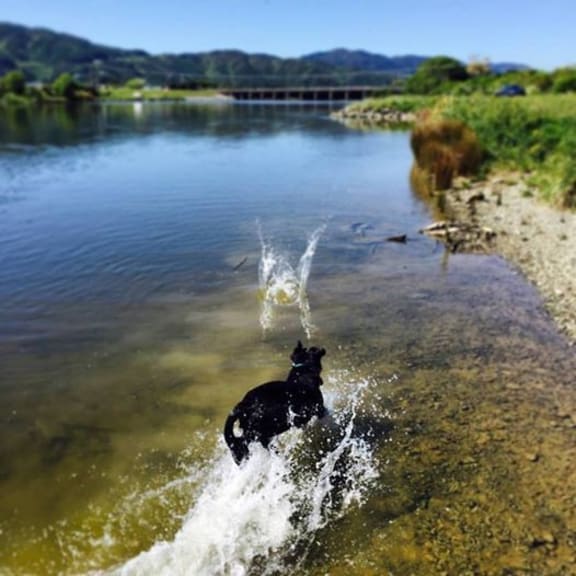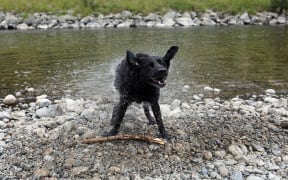Pets are often considered part of the family and, as such, vets are urging people not to forget some basic steps for keeping them safe during the warm summer months.

Photo: RNZ / Paloma Migone
First up is everyone's favourite, chocolate. And yes, dogs are partial to the treat just like their humans but, unlike us, sitting down for a chocolate session can be fatal for our four-legged friends.
New Zealand Vet Association (NZVA) Companion Animal Society Branch president Brendon Bullen said chocolate was the most common form of poisoning among dogs, as it contained the chemical theobromine.
A glimmer of hope for Fido is that white chocolate is okay as it doesn't contain the chemical but the darker the chocolate, the more dangerous it is.
Dr Bullen said dogs which had eaten chocolate often had diarrhoea or vomiting but it could lead to tremors and seizures and even be fatal if they ate a lot.
Overheating and heatstroke
Most dogs just love a trip in the car with their human but Dr Bullen said it was important not to leave them in the car unattended as they could overheat.
Every summer there are stories of people who left their dogs in the car.
"Never ever leave a dog in a car, even with the windows down. They just cannot move that heat quickly," he said.
"Even if you've got the windows down it can get extremely hot in a car. And the hotter it gets, the less and less effective dogs' panting gets at getting rid of that excessive heat."
Dogs were also susceptible to heatstroke, so owners should walk them in the mornings and evenings and should test the concrete and asphalt to ensure it was not burning or damaging their dog's paws.
A dog with heatstroke would pant heavily, drool, have glazed eyes, lack of coordination and be vomiting.
Animals with heatstroke should be covered with water-soaked towels, given them small amounts of water and be taken them to a vet.
Overheating and heatstroke could lead to permanent organ damage or death, Dr Bullen said.
Toxic algae

Inka the dog frolicks in the river. Photo: RNZ / Paloma Migone
The number of dogs poisoned by toxic algae is on the increase and vets say dog owners should be vigilant when they take their pets to rivers.
Dr Bullen said council websites were usually a good source of updates on toxic algal blooms.
The algae looked like brown or black mats covering rocks on the riverbed and when it dried it turned a light brown or white colour.
Neither dogs nor people should enter the river if toxic algae was present, Dr Bullen said.
"The algae has a lot of toxins that just shut down systems in the body. So for dogs what this looks like is usually vomiting to start with, a bit of diarrhoea, and then that can proceed to lethargy, muscle tremors and then paralysis and death," he said.
The NZVAs Keep Your Pet Safe in Summer checklist covers the main issues owners should be aware of to help pets stay safe in summer.


